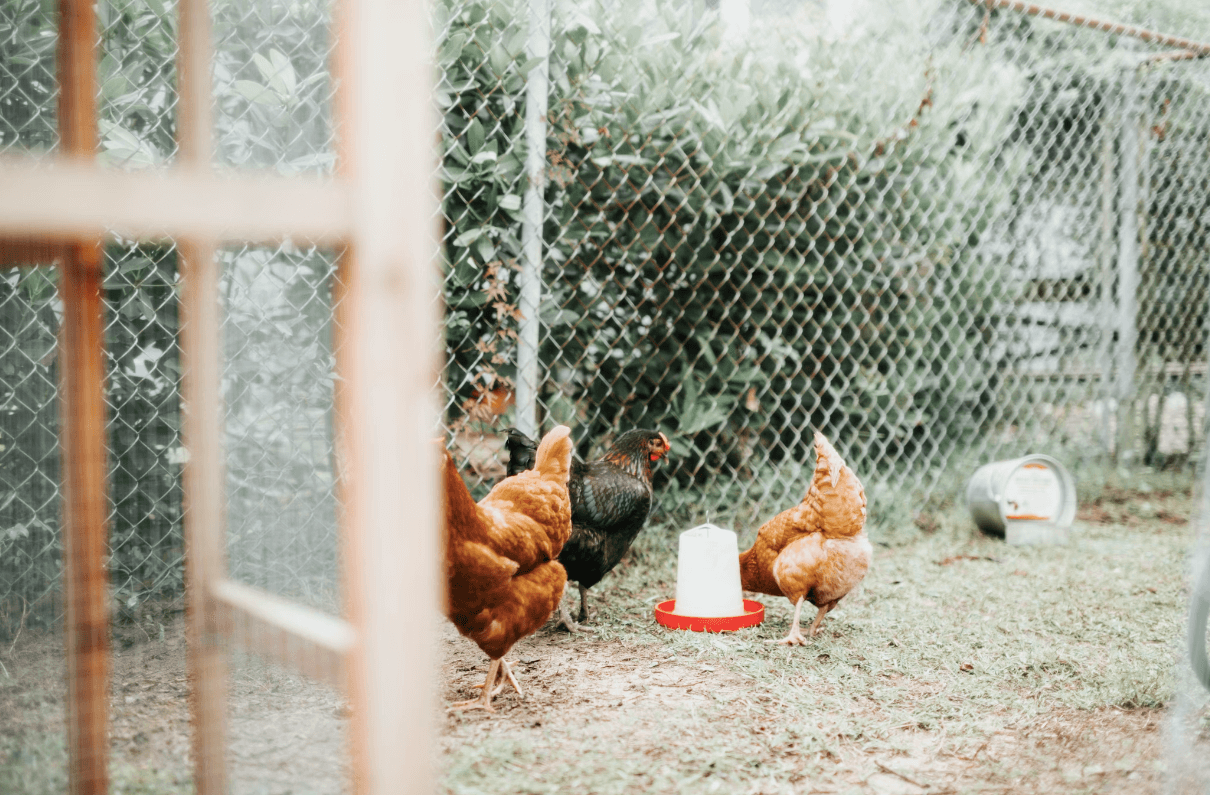Meta Description: Discover 5 super simple tips for keeping your chicken feeder in tip-top shape, ensuring it remains a reliable source of nourishment for your birds.
Maintaining a chicken feeder might seem mundane, but the importance of carrying out this task can’t be overstated. Well-cared-for equipment is not only crucial for the well-being of your backyard flock but also plays a large role in optimizing feeding efficiency and reducing food waste.
Neglecting your feeder might lead to a range of problems in your chicken coop, such as contamination, pest infestations, and compromised hen health.
In this article, we delve into five super simple tips that can help you keep your chicken feeder in tip-top shape with minimal effort. From regular cleaning to strategic placement, these easy pointers ensure that your device remains a reliable source of nourishment for your feathered friends.
Let’s get straight to it.
1. Clean Your Feeder Regularly
Keeping your chicken feeder clean is a crucial part of raising happy, healthy hens. Regular scrubbing prevents the build-up of harmful bacteria and mold while ensuring your birds always have access to fresh, uncontaminated feed.
Here’s an easy step-by-step guide on how to effectively clean your chicken feeder:
- Empty the feeder: Begin by removing any remaining feed from the device. This makes the cleaning process easier and more thorough.
- Disassemble it: If you have a feeder that is designed to be disassembled, take it apart to access all the nooks and crannies where dirt and debris may accumulate.
- Scrub with warm, soapy water: Use a gentle detergent or dish soap mixed with warm water to scrub the feeder thoroughly. Pay special attention to any areas that have visible dirt and residue.
- Rinse: After scrubbing, rinse all parts of the device with clean water to remove any soapy residue.
- Allow to dry completely: Once cleaned and rinsed, allow the feeder to air dry thoroughly before reassembling it and filling it with feed. Taking this step helps to prevent the growth of mold and bacteria.
Make it a habit to scrub your chicken feeder regularly, ideally every week or whenever it appears dirty. A frequent cleaning routine ensures your device remains safe and sanitary for your birds.
2. Place Your Feeder in an Ideal Spot
When it comes to maintaining your chicken feeder, it’s also key to place it in an ideal spot. Where you leave your device can impact its cleanliness, accessibility, and overall effectiveness in feeding your flock.
Ensure to choose a location that allows your hens to easily use their feeder, with no obstacles or barriers preventing them from reaching it. This encourages regular eating and makes the birds less likely to peck at the device, which could cause damage or spilled feed.
Opt for a place that is clean and dry to minimize the chances of your grain becoming contaminated. Avoid putting the feeder directly on the ground where it may come into contact with mud, dirt, or moisture, which could necessitate more frequent scrubs.
Keeping your device elevated or placing it on a raised platform helps to maintain cleanliness and helps preserve the quality of the food.
You should also consider any potential predators when selecting the location for your feeder. Keep it away from areas where raccoons or snakes are likely to lurk, such as dense vegetation or dark corners.
Using a predator-proof barrier can help deter unwanted visitors and minimize the risks of damage to your feeder.
Additionally, place the device in a location that allows you to freely observe your flock’s feeding behavior. This allows you to quickly see any issues there may be with the equipment, such as malfunctioning, and take action as needed.
3. Manage Pests Effectively
(Image source: Pexels)
To maintain the cleanliness and integrity of your chicken feeder, effective pest management is essential. Rodents, insects, and wild birds can contaminate the feed, spreading germs that pose a risk to your birds’ health.
Be proactive about pests and implement some strategies to keep them away from your feeder.
Store your chicken feed in secure containers that seal tightly to prevent pests from accessing it. Also, make sure to keep the area where your store feed clean and free of spills to minimize its attractiveness to unwanted invaders.
You should clean the area around the feeder regularly to remove any spilled food and debris. Avoid leaving feed out overnight, as this can encourage infestations unless its in a protected feeder
Take steps to pest-proof your device by sealing any gaps in the housing with a silicone sealant to prevent insects or rodents from infiltrating the interior. Make sure the feeder lids are securely closed so they can’t be easily opened by rats.
Consider using traps to control pest populations around your equipment and keep them away from the feeder area.
Check your device regularly for any signs of pest activity, like droppings, chewing marks, or nests. You may need to make adjustments to your pest control measures to prevent them from exploiting any weaknesses.
4. Inspect Your Feeder Regularly
Frequently inspecting your chicken feeder is vital for identifying any potential issues early and ensuring it functions properly. By routinely assessing your device, you can detect any signs of damage, wear, or malfunction and correct these issues promptly.
Start by visually examining the feeder for any cracks, dents, or missing parts. Check all the components, including the feeder tray and dispensing mechanism, for wear and tear.
Test the functionality of the device by filling it with feed and watching how it dispenses. Make sure the feeder operates smoothly without any jams or blockages, and test all moving parts to ensure they are functioning correctly.
You should also identify any maintenance needs or repairs required to keep the equipment in optimal condition. Replace worn-out parts, tighten loose screws, and lubricate moving components as needed to ensure the feeder operates smoothly.
Incorporating regular inspections of your device into your poultry care routine helps you proactively address any issues and promotes the well-being of your flock.
5. Protect Your Feeder From the Weather
The weather can have a significant impact on the condition and effectiveness of your chicken feeder. Exposure to elements like rain, snow, and extreme temperatures can lead to your chickens’ food becoming spoiled and damage your device.
You should implement weather protection measures to help safeguard your feeder and ensure its longevity.
Be sure to place it in a sheltered area, such as under a roof or in a covered chicken coop. Taking this step protects the equipment from direct exposure to rain, snow, and sunlight, and helps keep the grain dry.
It also pays off to select a feeder made from a weather-resistant material, like stainless steel or treated wood, that is less susceptible to damage from moisture, UV rays, and temperature fluctuations:
Make seasonal adjustments to your weather protection measures depending on the changing conditions. You could consider adding insulation to your feeder during colder months to prevent the grain from freezing.
By taking these proactive steps to protect your device from the elements, you can prevent damage and prolong the lifespan of your chicken feeder.
Master the Art of Chicken Feeder Care
Maintaining your chicken feeder doesn’t have to be a daunting task. By implementing our simple yet effective tips, you can ensure your device remains a reliable source of nourishment for your flock.
Remember, a clean and well-maintained feeder not only prevents contamination and diseases but also contributes to the overall efficiency of your backyard poultry operation. Make maintenance a priority and incorporate it into your routine to enjoy the satisfaction of knowing that your flock is well-fed and thriving.
If you have any questions on the best ways to care for your chicken feeder, feel free to contact us. We’re here to provide guidance and support to help you maintain a clean and efficient feeding system for your flock.





